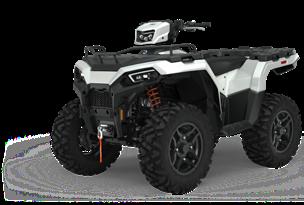5 minute read
DIRTBIKE TECH: GETTING THE POWER BACK
Getting the Power Back Cleaning a Dirty Carburetor
Riding a dirt bike is one of the most thrilling forms of off-road recreation and racing. Whether cruising down a single-track trail or blasting wide open across the desert in search of a championship there is nothing like being on two wheels.
Keeping that off-road motorcycle (new or old) in peak form does require a bit of maintenance now and then. The amount of maintenance and severity of work needed are dependent on a number of factors such as an individual’s riding style, how the bike is used (trail ridden or Baja raced), where its ridden (sand, silt, mud, etc.), and amount of time spent in the saddle. Many times, it is as simple as cleaning the air filter or changing engine oil. There will be other times when maintenance means pulling the suspension apart or giving the engine a tuneup.
Words and Photos: John Lehenbauer One item that will eventually need some attention is the carburetor. Things like sluggishness, hard starting, and leaking can make it necessary to pull the carb off, crack it open, and give a thorough cleaning. In the case of our 1996 Honda CR 500 we decided it was a good time to go through the carb while the bike was torn apart for some routine maintenance on the rear suspension. With the sub-frame, shock, and fuel tank removed the carb was easy to get to and work on. Though the bike has been used hard through the years the carb had never given us any issues, but staying on top of things makes sure it continues to be that way. Follow along as we give the 500’s Keihin carburetor a quick going through and cleaning to keep it in peak working condition.
Our ’96 Honda CR500 has seen some harddusty miles, so we decided it was time to clean the carburetor and make sure the bike is performing up to par. With the rear shock, subframe, and fuel tank removed the carb is easily accessed. Along with the carb having a good layer of dirt, the vent hoses have seen better days. The hoses are hard and yellowed from age and will need to be replaced. First order of business with the carb off the bike is to use some carb cleaner and clean the outside. For the really caked on dirt, a soft bristle brush helps to get the grime off.


With no air box the carb is a lot easier to remove. Just need to loosen the clamp on the insulator and remove the top of the carb along with the throttle valve
(slide). We did find some varnish in the bottom of the bowl and a bit of dirt in the bowl drain plug, but overall it looked good.
Removing the main jet and the baffle plate, gives us access to the pilot jet and makes removing the float and float valve easy.
Then the air screw is removed. Make note of how many turns the screw is out. That way it can be easily set to the proper position upon reinstallation.


Any remaining gaskets are removed before cleaning. The carb cleaner is used on the main body. Every passage, orifice, and surface are cleaned of dirt and varnish.

The bowl is blasted with some carb cleaner to get dirt and varnish off. At some point someone had put some type of gasket dressing on the bowl gasket. This took a little scrubbing from a soft bristle brush to remove. The bowl and plug are clean and ready to go back together.
A cutting torch tip cleaning tool is used to make sure there is no debris left in any of the passages. Everything is then blasted with more carb cleaner to make sure it’s clean. The torch cleaner is also run through the jets to ensure they’re clean. Any remaining components are thoroughly cleaned.

Everything is laid out for reassembly.


The throttle valve, jet needle, and carb top also get a quick cleaning. The tops seal is also removed.
Many times, individual gaskets can be purchased (as needed) when working on carburetors. Since we were going through the whole carb we bought a kit from our local shop that gave us everything needed for a carb rebuild.

The original bowl screws have taken a beating through the years, so the new ones will make assembly and future disassembly much easier. New gaskets are installed in the carb top, bowl drain, and bowl.

The new jets and air screw are checked against the ones that came out of the carb. In our case they are the same, but many times the bikes jetting is different for performance reasons. Cleaning the original jets makes them ready to go if we needed to reuse them.
The new main jet and pilot jet are secured with the baffle plate before pinning the float and float valve in position. The bowl is then installed.




adjustment (not pictured). Cleaned, assembled, and ready to go back
The bowl drain is installed along with the chock/idle on the bike.
A quick inspection of the insulator makes sure there are not cracks that could allow dirt into the engine. It is a good time to also clean the insulator, just make sure no dirt gets in the opening.
The throttle valve and top are installed before the carb is mounted in the insulator.
New carb vent hose is cut to length and installed. To ensure the vent hoses don’t fall off they are secured in place with safety wire.

Last step is to put rest of the bike back together and feel the crisp power a clean carburetor provides. DIRTSPORTSWORLD.COM | 43










